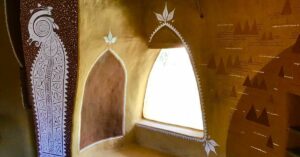Kerala Home Uses Traditional Techniques to Eliminate Hot Air, Reduce Power Bills
Designed with traditional materials and modern techniques, this sustainable home in Kottayam, Kerala shows how you can integrate rainwater harvesting, passive cooling and natural ventilation in your home
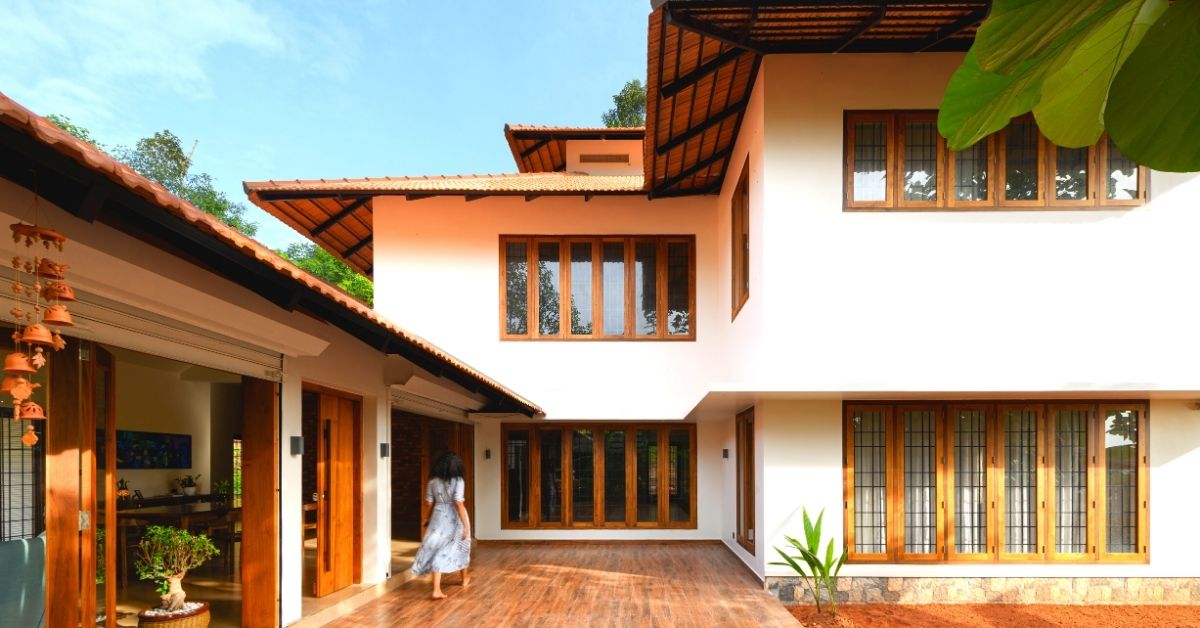
Nestled amid the lush green hills of Kottayam in Kerala, this Mangalore-tiled roof bungalow is an absolute marvel. Called EcoHouse, the 4-bedroom bungalow prevents the harsh sun’s rays from heating the structure and intensifies the flow of wind from below the hills.
Inspired by Travancore’s traditional architecture with free-flowing spaces and grand windows, it is a perfect amalgamation of modern design techniques and vernacular concepts of natural light ventilation.
The climate responsive house, which creates its own microclimate in the rooms, was built by Amrutha Kishor, Principal and founder of Elemental, an architectural firm that focuses on constructing sustainable spaces by promoting local architectural identity.
The underground rainwater harvesting system (with a capacity to store 7,500 litres of water) and a composting cylinder are other eco-friendly practices adopted by the owners.

For Amrutha, an alumnus of National Institute of Technology, Calicut (2016) and University of Nottingham (2018), the house is very special to her. Not just because it is her first independent project but also because it is for her parents.
“My parents grew up in Kerala and moved to Dubai for their respective jobs. While they are satisfied with their lives in Dubai, they always miss home. Growing their own food and having a big courtyard was something they always dreamt of. This is their retirement house and a tribute to their fond childhood memories,” Amrutha, who was nominated for Royal Institute of British Architects President’s Award in 2019, tells The Better India.
The brief from the client was simple – a minimalistic house that reminded them of grandeur palaces of Travancore. So, huge spaces and minimal decor sans any false ceilings define the house. The construction of the house began in 2018 and the owners moved in earlier this year.

“Our main requirement was good lighting and natural ventilation just like the traditional houses in Kerala that are naturally weather proofed without AC,” says K.M. Pattassery, Amrutha’s father.
The ‘Atmanirbhar’ House
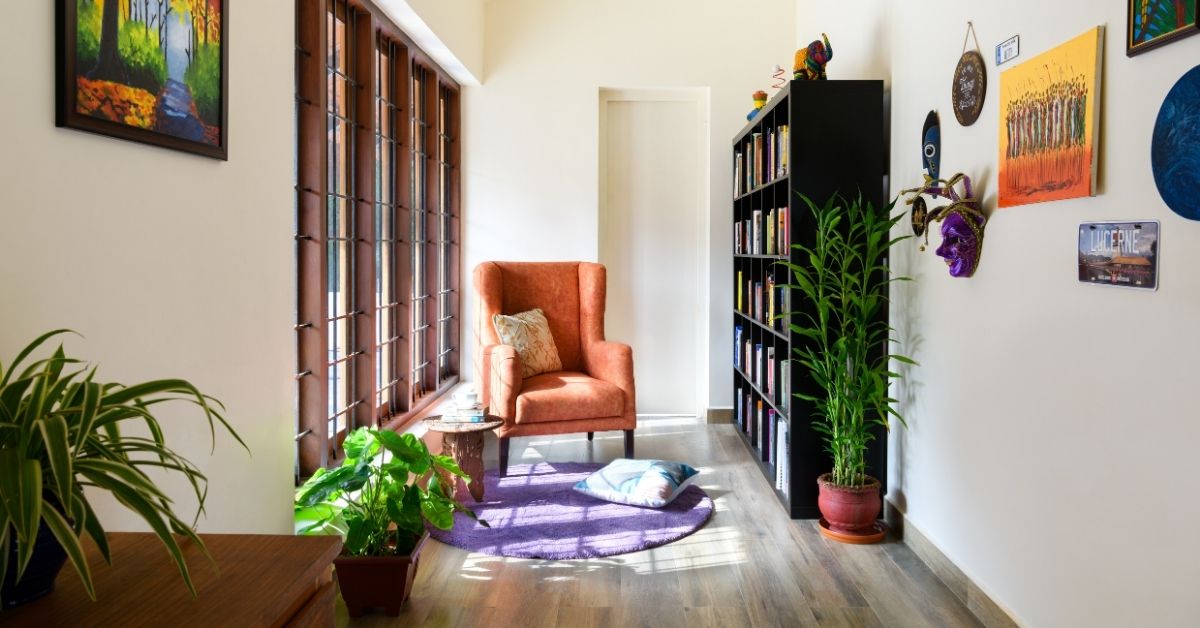
From natural ventilation, limiting solar heat gain, local materials that create thermal comfort indoors, on-site rainwater harvesting to a dedicated space for a fruit orchard, this home is self-sustainable.
Amrutha has used an earthy material palette by relying on locally sourced construction materials like Mangalore tiles and burnt clay bricks. Besides being cost-effective, these materials also reduced carbon footprints by cutting down on transportation.
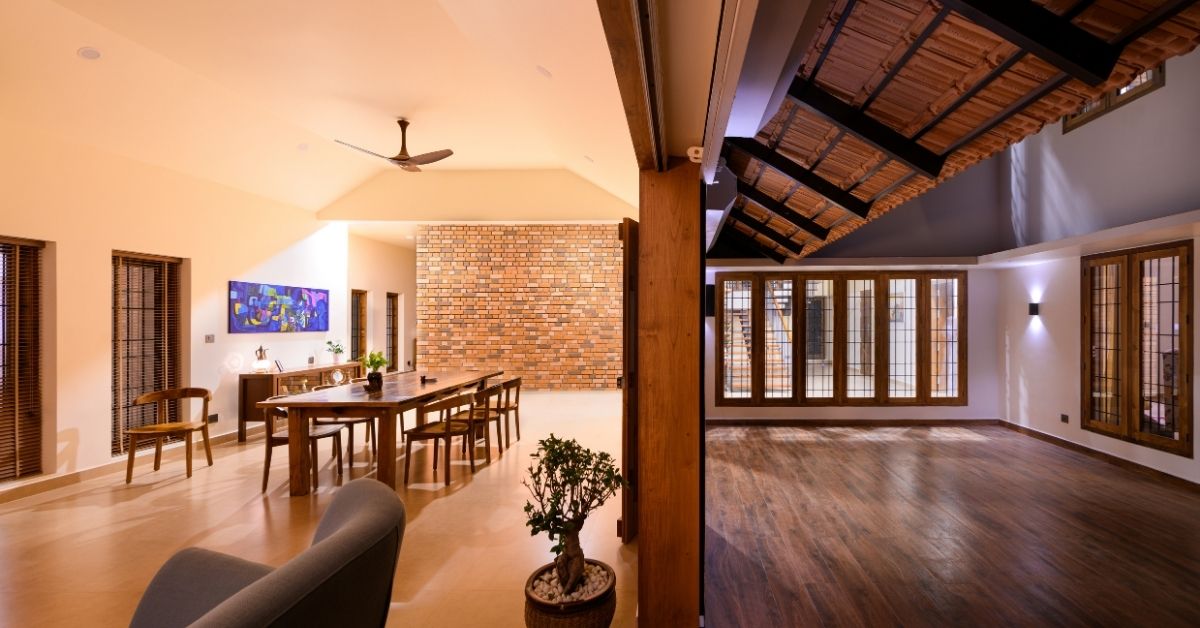
On such material is Mangalore tiles, made from a type of red clay which is hard and fire-resistant.
“They have immense insulation capacity, thus keeping energy consumption in check. They can absorb high degrees of heat and cold alike. We have not coated the tiles so that moss can naturally thrive on them, thus adding to the aesthetics,” explains Amrutha.
Meanwhile, concrete walls are replaced with burnt clay bricks. Apart from adding rustic charm, these bricks are resistant to moisture, insects and erosion, thus making them low maintenance, “These durable bricks will stand the test of time.”
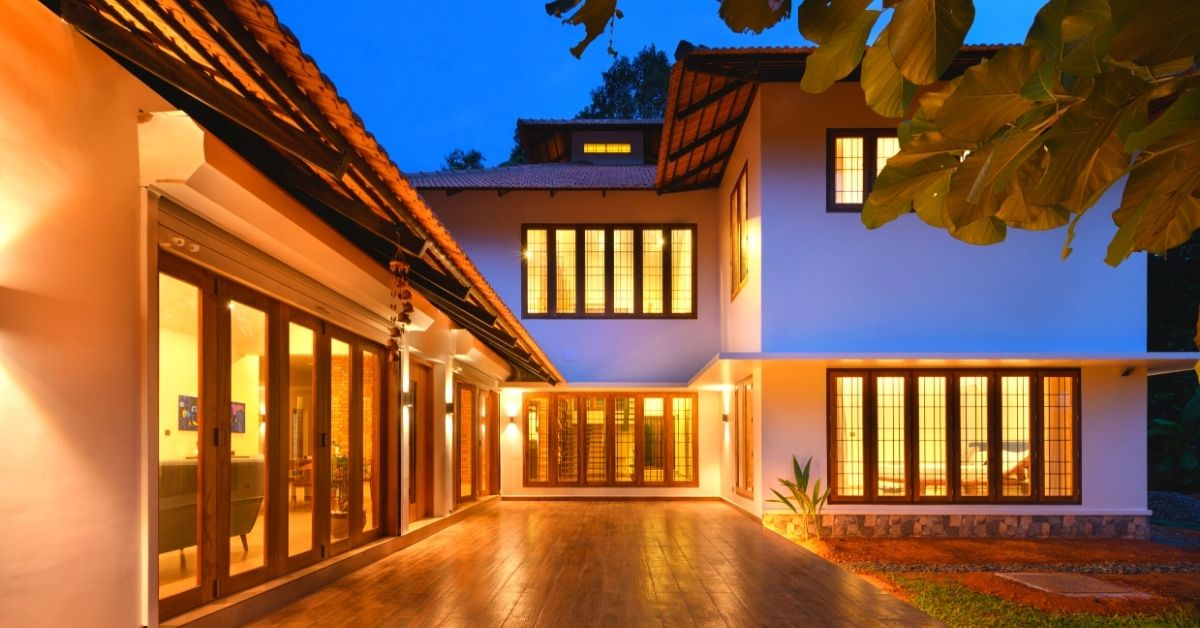
Coming to interiors of the house, heightened ceilings and innovative designs are the real heroes.
From the kitchen windows opening to a courtyard to having wall-sized windows and a wind tower, Amrutha has mindfully designed the interiors.
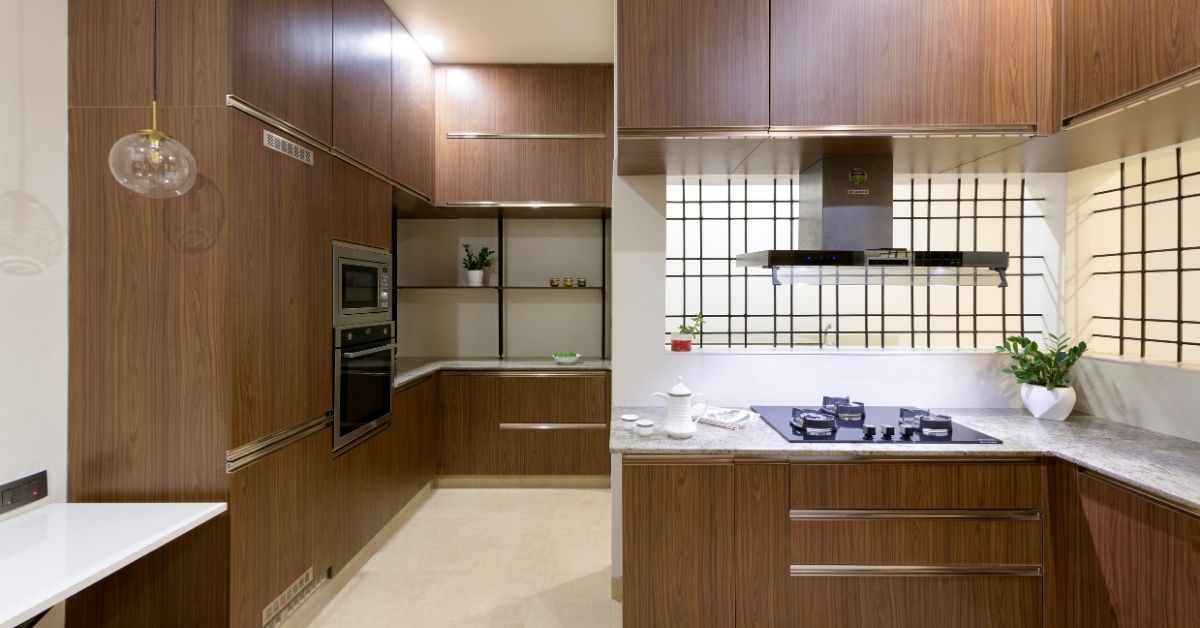
“A wind tower is constructed on a physics principle called ‘stack effect’ alongside the staircase. The concept uses temperature differences to move air. Hot air rises because of its low-pressure characteristics. The tower with four openings captures this hot air and releases outdoors. This is a lesser-used but a simple passive cooling method,” she says.

The exhaust fans are placed between the toilet and the room so that it can suck away the hot air along with the smell.
With so much of natural ventilation and windows, it is fair to assume ample sunlight coming inside the house. My immediate question was, ‘Won’t the sunlight heat up the interiors?’
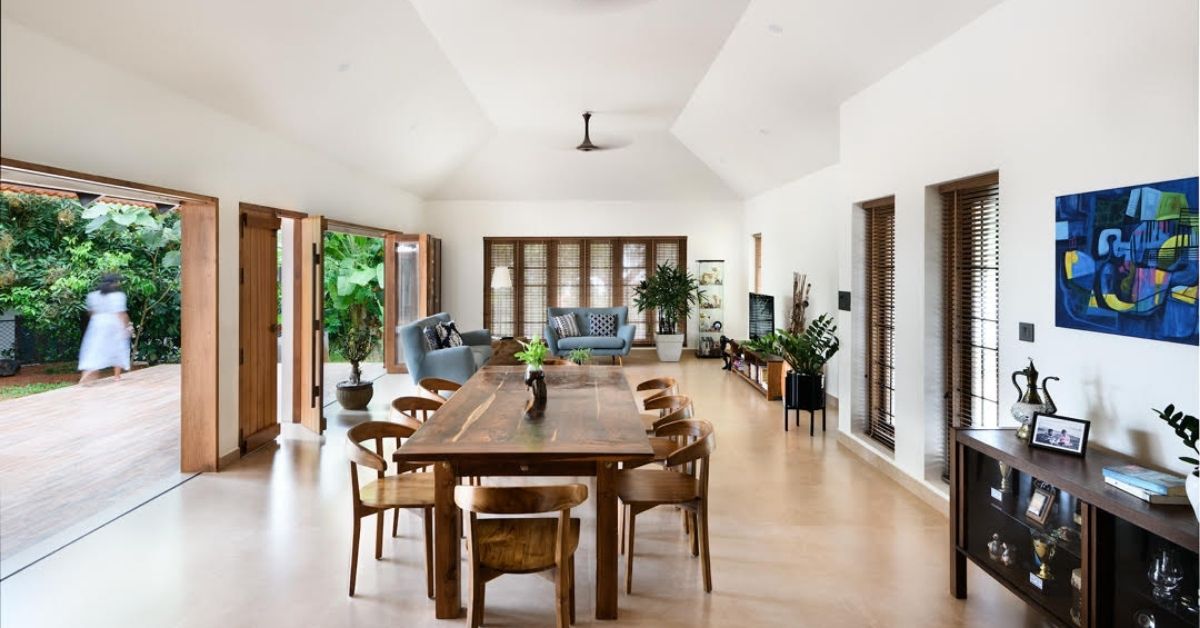
Amrutha lets out a hearty laugh and patiently explains the concept of indirect sunlight, thanks to the pitched roof structure.
“The roofs extend up to 1.5 metres to each side of the structure unlike the usual shading of 0.6 metres. The protruding roofs give enough shade to the house thus preventing direct penetration of sunlight.”
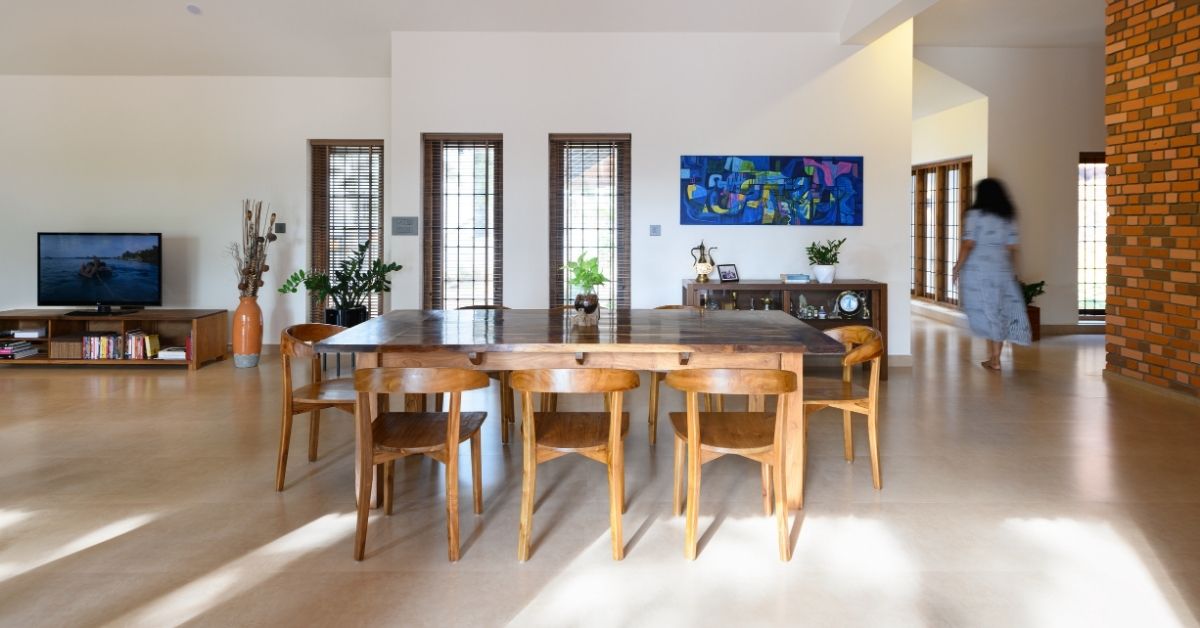
In short, all these passive cooling techniques have a direct impact on their electricity consumption and operational costs. The power bills are reduced by almost 20 per cent.
But what about the usage of Air Conditioners during soaring temperatures?
Well, there are no ACs in the house!
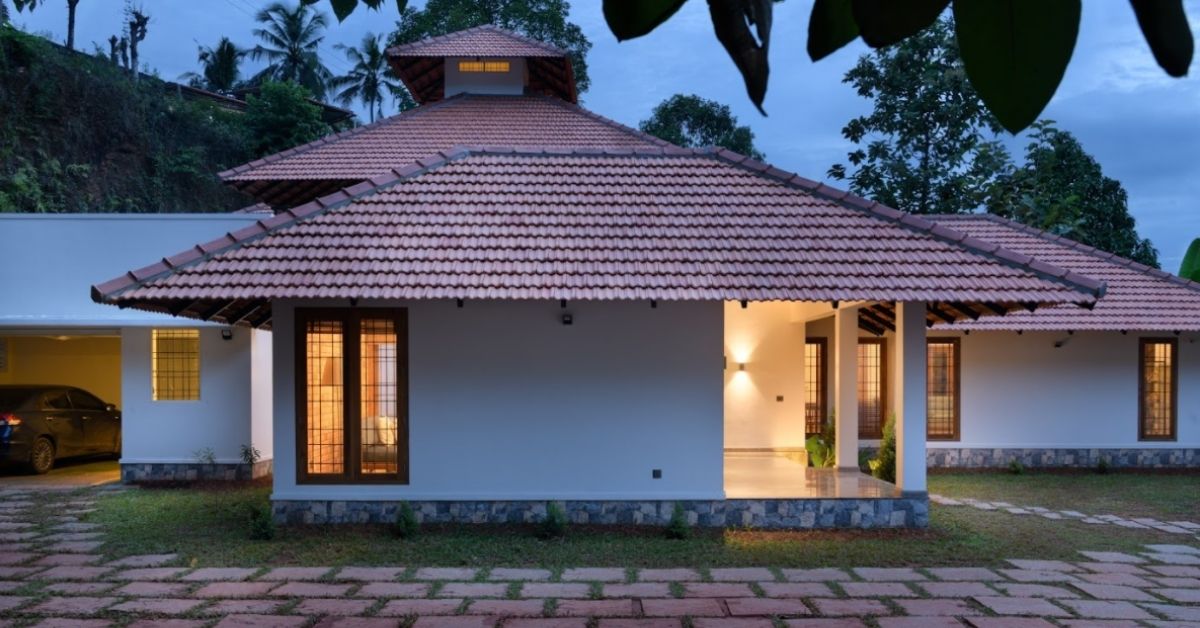
All these passive cooling techniques have certainly impacted the lifestyle of the owners.
“Being surrounded by greenery, sufficient vitamin sunshine and a constant breeze of cool air, we are feeling more healthy and energetic,” adds Pattassery.
Get in touch with Elemental here
Edited by Vinayak Hegde
If you found our stories insightful, informative, or even just enjoyable, we invite you to consider making a voluntary payment to support the work we do at The Better India. Your contribution helps us continue producing quality content that educates, inspires, and drives positive change.
Choose one of the payment options below for your contribution-
By paying for the stories you value, you directly contribute to sustaining our efforts focused on making a difference in the world. Together, let's ensure that impactful stories continue to be told and shared, enriching lives and communities alike.
Thank you for your support. Here are some frequently asked questions you might find helpful to know why you are contributing?


This story made me
-
97
-
121
-
89
-
167




